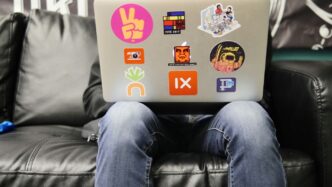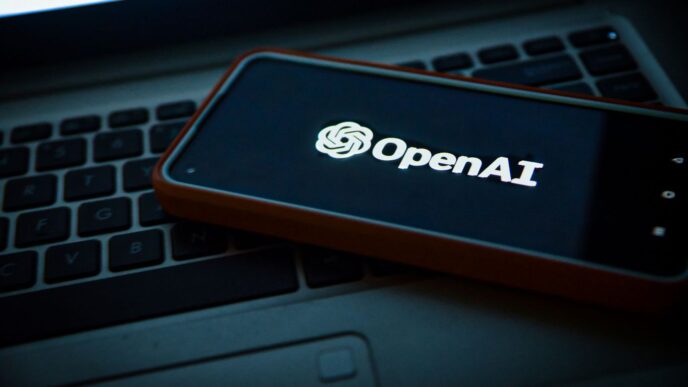Lots of talk happens about new rules for artificial intelligence. Some people think we need a whole new set of laws just for AI. But, if you really look close, maybe that’s not the best way to go. This article will explain why AI should not be regulated with brand new laws, and why we should instead look at what we already have.
Key Takeaways
- Current laws already cover many parts of AI, like the machines it runs on and the information it uses.
- Focusing on who is responsible for AI’s actions, rather than making complicated new rules, makes more sense.
- Allowing AI to grow without too many rules helps society and the economy move forward.
- We should figure out exact problems with AI first, then decide on solutions, instead of broad regulations.
- Existing legal systems can often be updated to handle new tech like AI without starting from scratch.
Existing Regulations Already Cover AI
It’s easy to think we need a whole new set of laws just because AI is new and shiny. But hold on a second! A lot of the potential problems people worry about with AI are already covered by existing rules. We don’t necessarily need to reinvent the wheel; we just need to make sure the wheels we have are turning properly.
Hardware and Computational Power Are Regulated
Think about it: AI doesn’t just exist in the cloud. It needs hardware to run. And that hardware, especially the really powerful stuff, is already subject to a bunch of regulations. We’re talking about environmental laws for those massive data centers (AI farms), export controls on semiconductors, and all sorts of things. It’s not like anyone can just build a supercomputer and do whatever they want with it. The global flow of semiconductors is tightly controlled.
Data and Knowledge Are Already Protected
AI thrives on data. But guess what? Data is already heavily regulated! We have data protection laws, intellectual property laws, and a whole bunch of other rules that govern how data can be collected, used, and shared. The courtroom drama surrounding AI and data is already playing out under existing legal frameworks. It’s about interpreting those frameworks for new technologies, not necessarily creating entirely new ones. The 1976 Copyright Act has proven to be resilient in the face of new technologies.
Algorithms Are Evolving Beyond Rigid Metrics
There was a big push for "algorithmic governance," focusing on things like the number of parameters or FLOPs. But that’s becoming less relevant as AI evolves. Smaller, smarter models are doing more with less computational power. So, trying to regulate AI based on those old metrics doesn’t really make sense anymore. The focus is shifting from the size of the model to the AI capabilities themselves, and how those capabilities are used. The momentum for strict “algorithmic governance” has waned since 2023.
Focus on Accountability, Not New Laws

It feels like every time something new comes along, the first reaction is to make a new law about it. But with AI, maybe we should pump the brakes a bit. Instead of rushing to create a whole new set of rules, let’s think about how we can use the laws we already have to make sure people are responsible for what AI does.
Human Responsibility for AI Actions
AI doesn’t act on its own; people make it, use it, and decide how it’s used. So, when something goes wrong, we need to look at who’s in charge. Is it the developer who wrote the code? The company that’s using the AI? Or maybe the person who gave the AI its instructions? Figuring out who’s responsible is way more important than just blaming the AI itself. It’s like if a self-driving car crashes – you don’t blame the car, you look at the company that made it and the person who was supposed to be monitoring it. The congressional bill aims to prevent states from enacting their own AI regulations for ten years.
Applying Timeless Legal Principles
We’ve had laws for thousands of years that deal with people messing things up. Think about it: if a builder builds a house that falls down, they’re responsible. The same idea should apply to AI. If an AI system causes harm, the people behind it should be held accountable. These old principles – like liability and transparency – are still good. We just need to figure out how to apply them to this new technology. It’s not about inventing something new; it’s about using what we already know works.
Avoiding Unnecessary AI-Specific Legislation
Do we really need a whole new set of laws just for AI? Maybe not. Sometimes, making new laws can actually slow things down and make it harder for companies to innovate. Plus, AI is changing so fast that any new law we make today might be outdated tomorrow. Instead of rushing into things, let’s see if we can adapt the laws we already have. That way, we can make sure people are responsible without stifling progress. It’s about finding the right balance. We need to make sure that we are using legal accountability to its full potential.
Innovation Thrives Without Over-Regulation
It’s easy to get caught up in the potential downsides of AI, but we can’t forget the incredible benefits it offers. Over-regulation could seriously slow down progress and keep us from realizing AI’s full potential. We need to be smart about how we approach this.
Accelerating AI Adoption for Societal Benefit
AI has the power to transform so many areas of our lives, from healthcare to education. Think about it: AI could help doctors diagnose diseases earlier, personalize learning for students, and even create more sustainable energy solutions. By embracing AI, we can tackle some of the world’s biggest challenges. We should accelerate AI adoption to improve society.
Preventing Stifled Economic Growth
New regulations can be expensive and time-consuming for businesses to navigate. If we make it too difficult for companies to innovate with AI, we risk falling behind other countries in the global economy. We need to strike a balance between protecting consumers and fostering a business-friendly environment. It’s about finding the sweet spot where innovation can flourish without unnecessary burdens. We don’t want to see economic growth stifled.
Encouraging Technological Advancement
Sometimes, the best way to encourage innovation is to simply get out of the way. When researchers and developers have the freedom to experiment, they’re more likely to make breakthroughs. Over-regulation can create a chilling effect, discouraging people from taking risks and exploring new ideas. Let’s create an environment where technological advancement is encouraged.
Problem-Driven Approach to AI Governance
It’s easy to get caught up in the hype around AI and start thinking about regulation in broad strokes. But that’s a recipe for disaster. We need to take a step back and focus on specific problems before we start writing laws. Regulation isn’t free; it has costs, both in terms of economic growth and strategic competition. Policymakers need to tap into AI expertise that can shed light on the risks – to whom, how severe, and how likely.
Identifying Specific Regulatory Challenges
Instead of trying to regulate AI as a whole, we need to pinpoint the exact problems we’re trying to solve. What specific AI-based technology is causing concern? Is it bias in facial recognition, the spread of misinformation, or something else entirely? We need to define the scope of the problem clearly. Is the object of protection the individual, the nation, a market, or humanity itself?
Assessing Risks and Their Likelihood
Once we’ve identified a specific problem, we need to assess the risks involved. How likely is the risk to occur? How severe would the consequences be? It’s not enough to say that something could happen; we need to understand the probability and potential impact. For example, consider the following risk assessment:
| Risk | Likelihood | Severity | Mitigation Strategies |
|---|---|---|---|
| Bias in hiring algorithms | Medium | High | Auditing algorithms, diversifying training data |
| Autonomous vehicle crashes | Low | Very High | Rigorous testing, fail-safe mechanisms |
| Deepfake disinformation | High | Medium | Watermarking, media literacy campaigns |
Leveraging Expertise for Informed Decisions
AI is a complex field, and policymakers can’t be expected to understand all the nuances. That’s why it’s crucial to tap into expertise from various sources, including:
- AI researchers and developers
- Ethicists and legal scholars
- Industry experts
- Community representatives
By consulting with a diverse range of experts, policymakers can make more informed decisions about AI governance. They are currently taking this step through the series of “AI Insight” summits that are serving as a data collection exercise.
Adapting Current Frameworks for AI

Interpreting Existing Laws for New Technologies
It’s tempting to think we need a whole new legal system for AI, but that’s probably overkill. Instead, we should focus on how existing laws apply to these new technologies. Think about it: laws about fraud, discrimination, or negligence didn’t suddenly become irrelevant just because AI is involved. We just need to figure out how they translate to this new context. For example, if an AI system makes a biased hiring decision, existing anti-discrimination laws might already provide a framework for addressing that. The challenge is in the interpretation and application, not necessarily in creating entirely new laws. We need legal minds to carefully consider how these established principles apply in the age of AI. This approach can help us avoid knee-jerk reactions and ensure that regulations are grounded in well-established legal precedent.
Utilizing Proven Regulatory Models
We don’t have to reinvent the wheel when it comes to regulating AI. Plenty of industries already have regulatory models that could be adapted. Consider the pharmaceutical industry, with its rigorous testing and approval processes, or the financial industry, with its focus on risk management and consumer protection. These models offer valuable lessons and frameworks that can be applied to AI. For instance, we could adapt the NIST frameworks for safe AI to ensure AI systems are reliable and trustworthy. The key is to identify the regulatory models that are most relevant to the specific risks and challenges posed by AI, and then adapt them to fit the unique characteristics of this technology. This approach allows us to build on existing knowledge and avoid making the same mistakes that have been made in other industries.
Avoiding Hasty and Outdated Regulations
AI is evolving at a breakneck pace, so any regulations we put in place need to be flexible and adaptable. The last thing we want is to create regulations that are outdated before they even go into effect. Remember when Italy tried to ban ChatGPT? That’s a perfect example of a hasty decision that didn’t really solve anything. Instead of rushing to regulate, we should focus on creating frameworks that can evolve alongside the technology. This means avoiding rigid rules and embracing principles-based regulation that focuses on outcomes rather than specific technologies. It also means regularly reviewing and updating regulations to ensure they remain relevant and effective. By taking a more measured and adaptable approach, we can avoid stifling innovation while still addressing the potential risks of AI. We need to ensure that any regulatory action is well-informed and based on a solid understanding of the technology and its potential impacts. We need to avoid the trap of creating regulations that are based on fear rather than facts.
Diverse AI Requires Varied Regulatory Tools
Tailoring Tools to Specific AI Technologies
AI isn’t one thing; it’s a bunch of different technologies doing different things. So, treating it like a monolith when it comes to regulation just doesn’t make sense. You can’t use the same hammer for every nail, and you can’t use the same regulation for every AI. Think about it: a self-driving car has way different risks than, say, a program that recommends what movie to watch next. We need to be smart and specific about how we regulate, focusing on the actual risks each type of AI presents.
Recognizing the Futility of Blanket Bans
Banning an AI technology outright is usually a bad idea. Remember when Italy tried to ban ChatGPT? It didn’t work. These technologies spread fast, and trying to block them completely is like trying to stop the wind. Plus, bans can backfire, pushing innovation underground or giving other countries a competitive edge. Instead of knee-jerk reactions, we need to think about how to manage the risks while still letting the good stuff happen. Blanket bans are rarely the answer.
Exploring Creative Regulatory Schemes
We need to get creative with how we regulate AI. Fines and traditional rules might not always cut it. Maybe we need things like mixed regulatory markets, where independent groups check AI systems, but the government keeps an eye on those groups. Or maybe we need to focus on testing and monitoring AI after it’s been released, like the executive order suggests. The point is, we need to be open to new ideas and find solutions that actually work in the real world. We should consider the array of potential regulatory tools that might be appropriate. AI technologies are wide-ranging, from medical robotics to battlefield targeting to writing assistants. One regulatory tool will not fit all.
Flexible Organizational Structures for Oversight
It’s easy to get caught up in the tech itself when talking about AI, but who’s actually watching the watchers? Figuring out the right organizational structure for AI oversight is just as important as the rules themselves. We need to think about how different parts of the government, and even different countries, can work together effectively.
Leveraging Decentralized Government Strengths
The US has a decentralized government, and that can actually be a good thing for AI regulation. Different agencies have different areas of expertise. The FTC is already looking at AI’s impact on content creation and privacy. The Department of Defense is the right place to handle AI on the battlefield. Trying to centralize everything into one giant AI agency just doesn’t make sense. It’s about using the strengths we already have. For example, the AI governance framework can help organizations manage risks.
Promoting Interagency and International Coordination
AI doesn’t stop at borders, so neither should oversight. We need agencies talking to each other, and countries working together. Think about setting standards or sharing information. The recent AI Safety Summit in the UK showed that countries are at least willing to talk about AI governance. We need to build on that. Maybe some things can be handled by existing groups, like the UN. Other things might need entirely new organizations, like a global system for tracking who’s renting computing power to train those really advanced AI models.
Considering Mixed Regulatory Markets
What about letting private companies play a role in regulation, but with government oversight? It’s like how credit rating agencies work. Moody’s rates debt, but the SEC keeps an eye on the rating agencies themselves. It could be a way to get more flexibility and expertise into the system. But we’d need to be careful to avoid the problems that plagued credit rating agencies during the 2008 financial crisis, where some pretty bad debt got high ratings. We need to make sure there are real checks and balances in place. It’s about finding the right balance between government oversight and regulatory markets.
Wrapping It Up: Why Less Is More for AI Rules
So, what’s the big takeaway here? It’s pretty simple, really. AI is a tool, just like a hammer or a car. We don’t make new laws for every new tool that comes along, do we? Instead, we use the rules we already have. If someone uses AI to do something bad, we have laws for that. We have laws about responsibility, about being open, and about fairness. These aren’t new ideas; they’ve been around for a long, long time. Trying to make a whole new set of rules just for AI might actually slow down all the good stuff it can do. Let’s stick with what works and apply our existing rules to this new technology. It just makes sense.
Frequently Asked Questions
Why do you say we don’t need new laws for AI?
We already have many rules in place that cover parts of AI, like the powerful computers it runs on and the data it uses. These existing rules can often be used for AI, so we don’t always need brand new laws.
What’s more important than new AI laws?
Instead of making new laws just for AI, we should focus on holding people responsible for how AI is used. If someone uses AI to cause harm, the person should be held accountable, just like with any other tool.
How does too much regulation hurt AI?
When there are too many rules, it can slow down new ideas and stop good things from happening. If we don’t over-regulate AI, it can grow faster and help society in many ways, like improving health or making work easier.
How should we decide when to make rules for AI?
We should look at specific problems AI might cause, figure out how likely they are, and then decide if we need to do something. This way, we only make rules when they are truly needed and helpful.
Can old laws still work for new AI technology?
Many of our current laws are flexible enough to handle new technologies. We can often use these old laws in new ways to deal with AI, instead of rushing to create rules that might quickly become old-fashioned.
Why can’t one set of rules cover all AI?
AI comes in many different forms, from simple tools to complex systems. A single rule won’t work for all of them. We need different approaches for different types of AI, and outright bans usually don’t work.














